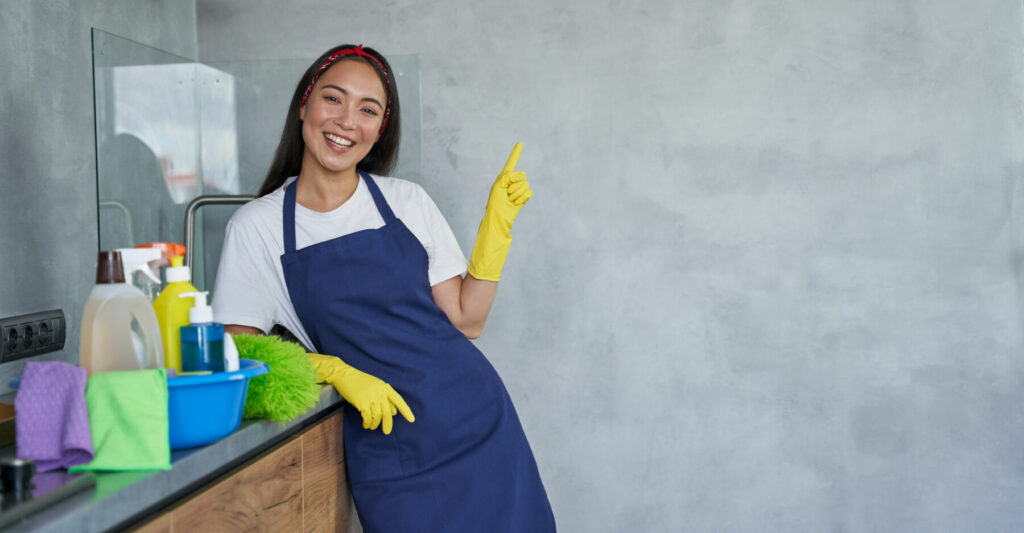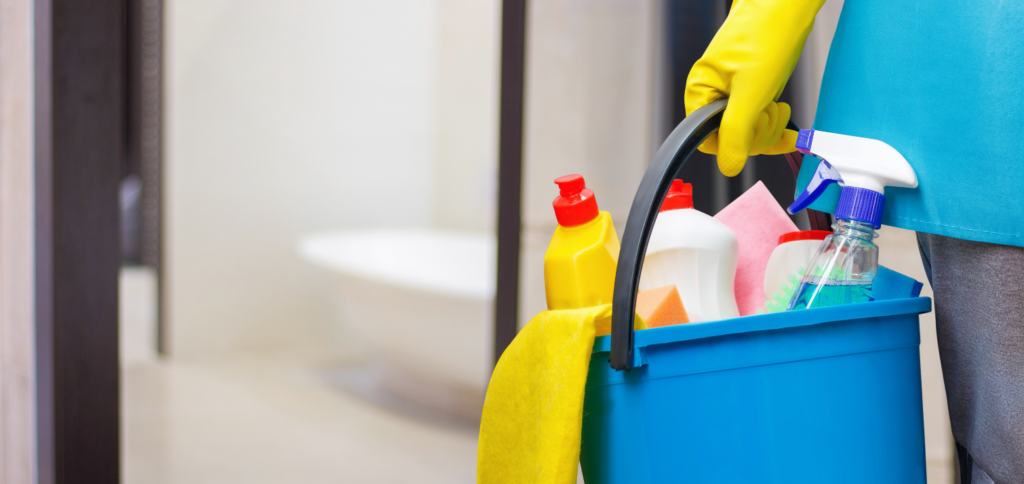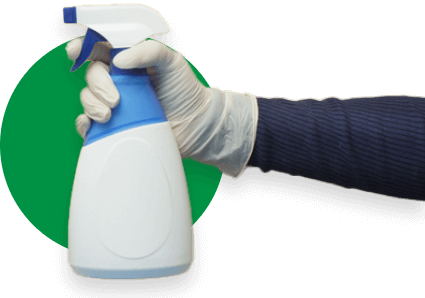Now more than ever, cleanliness is essential. We should always strive to meet public health standards and avoid spreading germs and bacteria.
Unfortunately, germs are everywhere and can spread quite easily. Therefore, it is essential to clean our surroundings thoroughly. For many, this means sanitizing or disinfecting any dirty surfaces. But, what is the difference between sanitizing and disinfecting?
Although these terms are used interchangeably, there is a difference between sanitizing and disinfecting. With the proper information, you can fulfill public health standards and prevent the spread of diseases.
Similar But Different: Sanitize vs. Disinfect
The table below explains the difference between sanitizing and disinfecting.
| Factor | Sanitizing | Disinfecting |
| Purpose | This is done to reduce the number of germs on surfaces. | By disinfecting, you will kill all germs on surfaces. |
| Application | You can sanitize a food contact surface to prevent contamination. | Typically, high-touch surfaces should be disinfected to stop the spread of infectious diseases. It is important to clean the surface before disinfecting. |
| Method | Generally, you will use a sanitizing solution. Usually, these contain less harsh chemicals. | Disinfectant products may be alcohol or hydrogen-peroxide based. |
| Effectiveness | This will kill most viruses and bacteria to a safe level. This level should meet public health standards. | This will kill most pathogens. For greater effectiveness, there may be an increased contact time. |
| Frequency | For food contact surfaces, you should sanitize regularly. | Similarly, high-touch surfaces and high-risk locations should be disinfected regularly. |
| Safety | These products are typically safe to use when used properly. | Disinfectant products can contain harsh chemicals and should be used with caution. |
| Examples | There are plenty of surfaces you should sanitize. For example, a food contact surface should be sanitized regularly. | To stay within public health standards, medical equipment should be routinely disinfected. Furthermore, high-touch surfaces should be disinfected as well. |
Cleaning
Understandably, there is a difference between cleaning, sanitizing, and disinfecting. In essence, cleaning removes dirt from a surface. This can be done by wiping, vacuuming, or scrubbing. Although this will not remove all germs on surfaces, it is a great starting point for fulfilling public health standards. You should always clean the surface first. By doing so, you are increasing the effectiveness of sanitizing and disinfecting. Cleaning can also remove dust and allergens from dirty surfaces.
Sanitizing
When sanitizing, you are removing the number of germs and bacteria from dirty surfaces. It is important to note that you are not killing all germs on surfaces. Instead, you minimize the number of germs to meet public health standards the CDC (Centers for Disease Control and Prevention). In addition, it is essential to read the label for your sanitizing solution. By doing so, you will know if it is safe for food contact surfaces.
Disinfecting
Disinfect products are used to kill all germs, viruses, and bacteria on a surface. This is because they contain harsh chemicals such as alcohol, chlorine, or hydrogen peroxide. Therefore, it is essential to use these products with care. Disinfectants are also quite useful in stopping the spread of infectious diseases.
All disinfectant products are regulated by the EPA (Environmental Protection Agency). This ensures a baseline for all products. It is important to note that disinfectants will not clean dirty surfaces. This is why you should always clean dirty surfaces before disinfecting. In addition, contact time can impact the level of effectiveness against killing viruses and bacteria.

How to Choose: Should You Sanitize or Disinfect
With the proper information, you should understand the difference between sanitizing and disinfecting. Now, the question is, which surfaces should be disinfected and which should be sanitized?
To begin, dirty surfaces such as doorknobs, light switches, and smartphone screens should be routinely disinfected. These are high-touch surfaces that harbor the greatest amount of viruses and bacteria. By disinfecting, you are preventing yourself and others from getting sick.
Moving on, countertops with food products should be sanitized. Typically, these solutions contain less harsh chemicals and are safer to use around food contact surfaces.
It is essential to read the labels for both sanitizing and disinfectant products. This will let you know what they are effective against and will help ensure that your surroundings meet public health standards.
A cleaning company with knowledge and expertise will know what products to use and when they are needed. By doing so, you will fulfill public health standards.
Cleaning Product Safety and Storage
As important as cleaning products are to use, it is equally important to know how to store them safely. It requires great levels of understanding to implement proper storage procedures. Different storage procedures may be necessary depending on the difference between cleaning and disinfecting products.
You should always read the warnings on the label. Furthermore, cleaning products should always be kept in their original container. Unless explicitly stated on the label, do not mix cleaning products. Finally, depending on the product, you may need to wear gloves or goggles.

Now You Know The Difference Between Sanitize and Disinfect – Time To Clean
By knowing the difference between sanitizing and disinfecting, you should know how to clean surfaces and items properly. It is also important to note that there is a difference between cleaning, sanitizing, and disinfecting methods. Each cleaning product has different levels of effectiveness against various germs and bacteria.
For dirty surfaces, cleaning is recommended to remove visible dust and dirt. Sanitizing will remove a variety of germs on surfaces. Disinfecting is beneficial against killing all harmful bacteria and viruses. The amount of contact time with the disinfectant can increase effectiveness.
FAQs About Sanitizing vs. Disinfecting
What is sterilizing?
Sterilizing will kill all microorganisms on a surface. Typically, this happens in healthcare facilities. It is quite important to meet public health standards.
Does bleach sanitize or disinfect?
Depending on the concentration level, bleach can be used as a sanitizer or disinfectant. The difference between cleaning and disinfecting is that bleach should not be used for daily cleaning use.
Can rubbing alcohol or hydrogen peroxide be used to disinfect?
Yes, rubbing alcohol or hydrogen peroxide can be used as a disinfectant. It should be noted that hydrogen peroxide is stronger than rubbing alcohol. It can irritate skin greatly and should not be used as a hand sanitizer or wound disinfectant.
Which method is best for COVID-19?
The most effective methods are sanitizing and disinfecting. Sanitizing will remove the majority of germs, and disinfectants will kill viruses. This will result in the satisfaction of public health standards. Certain disinfecting products may require a longer contact time.
Which surfaces require the most diligence?
High-touch surfaces such as smartphones, doorknobs, TV remotes, and light switches require the most diligence.
Do my hands need to be sanitized?
Of course, you should wash your hands with soap and warm water for at least 20 seconds. Excessive use of disinfectant wipes can damage your hands.
Want to Learn More?
At Dallas Janitorial Services, our team of experts can effectively disinfect your surroundings at an affordable price. You can give us a call at 214-778-3689 or get a free quote.







